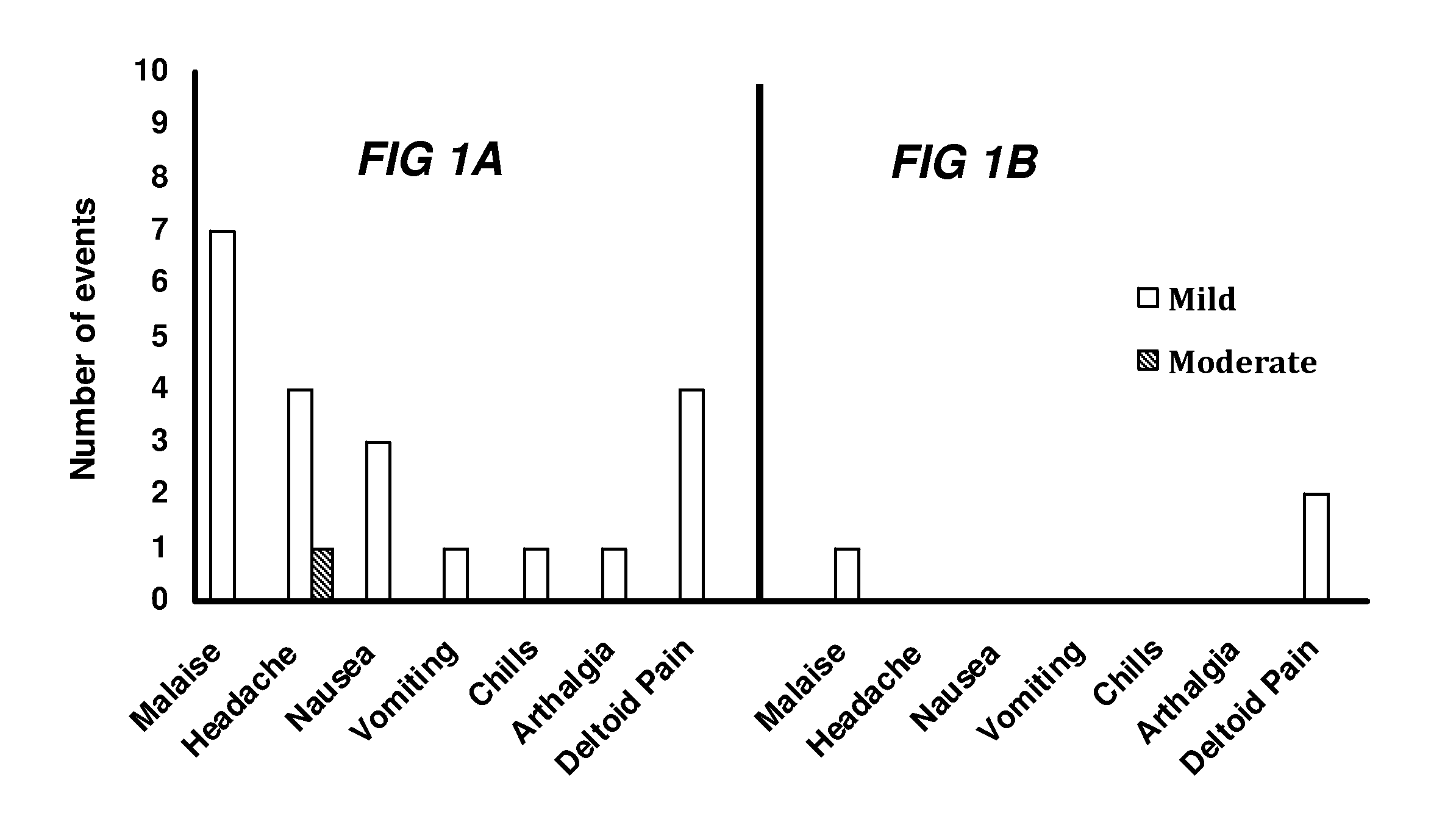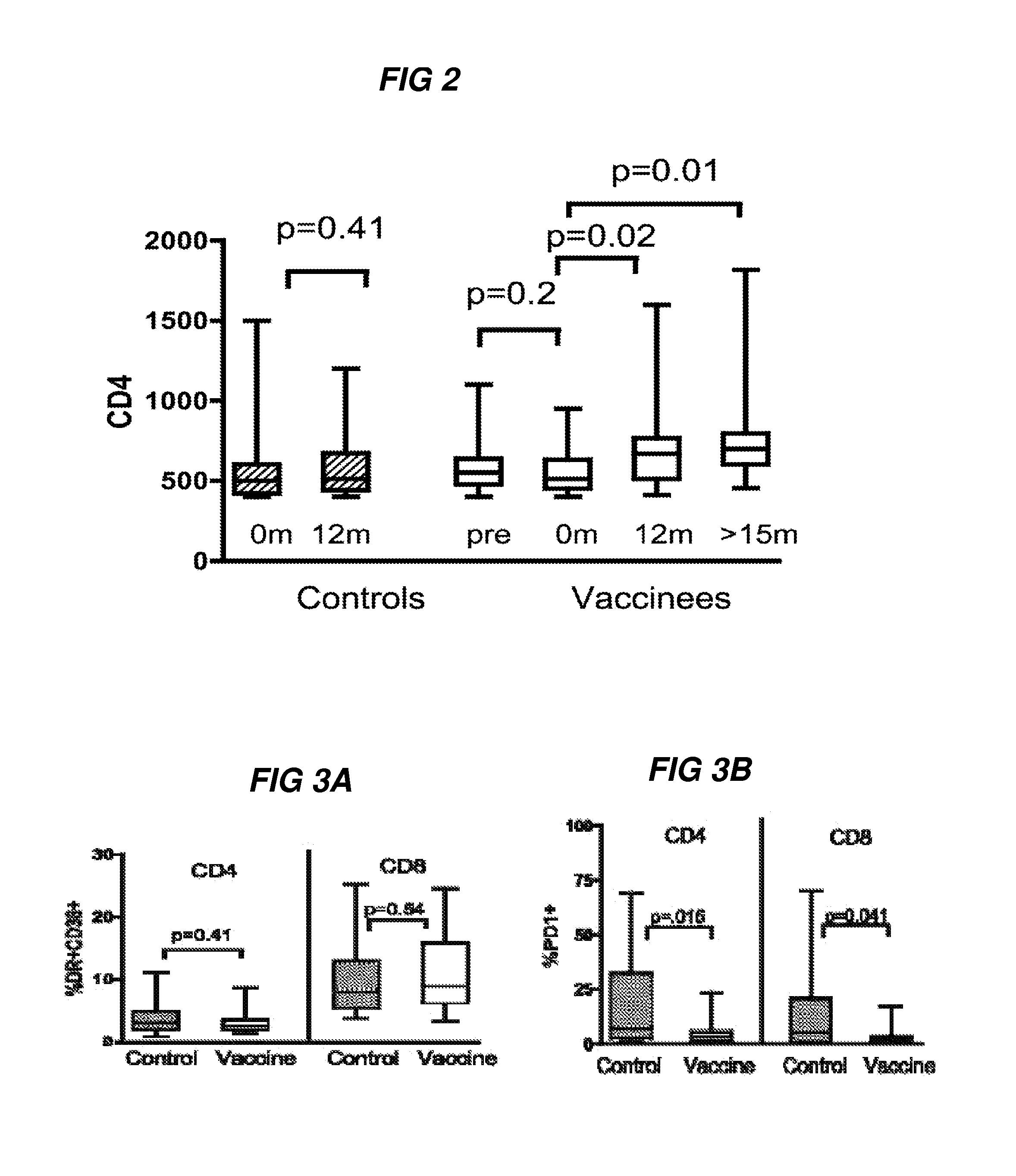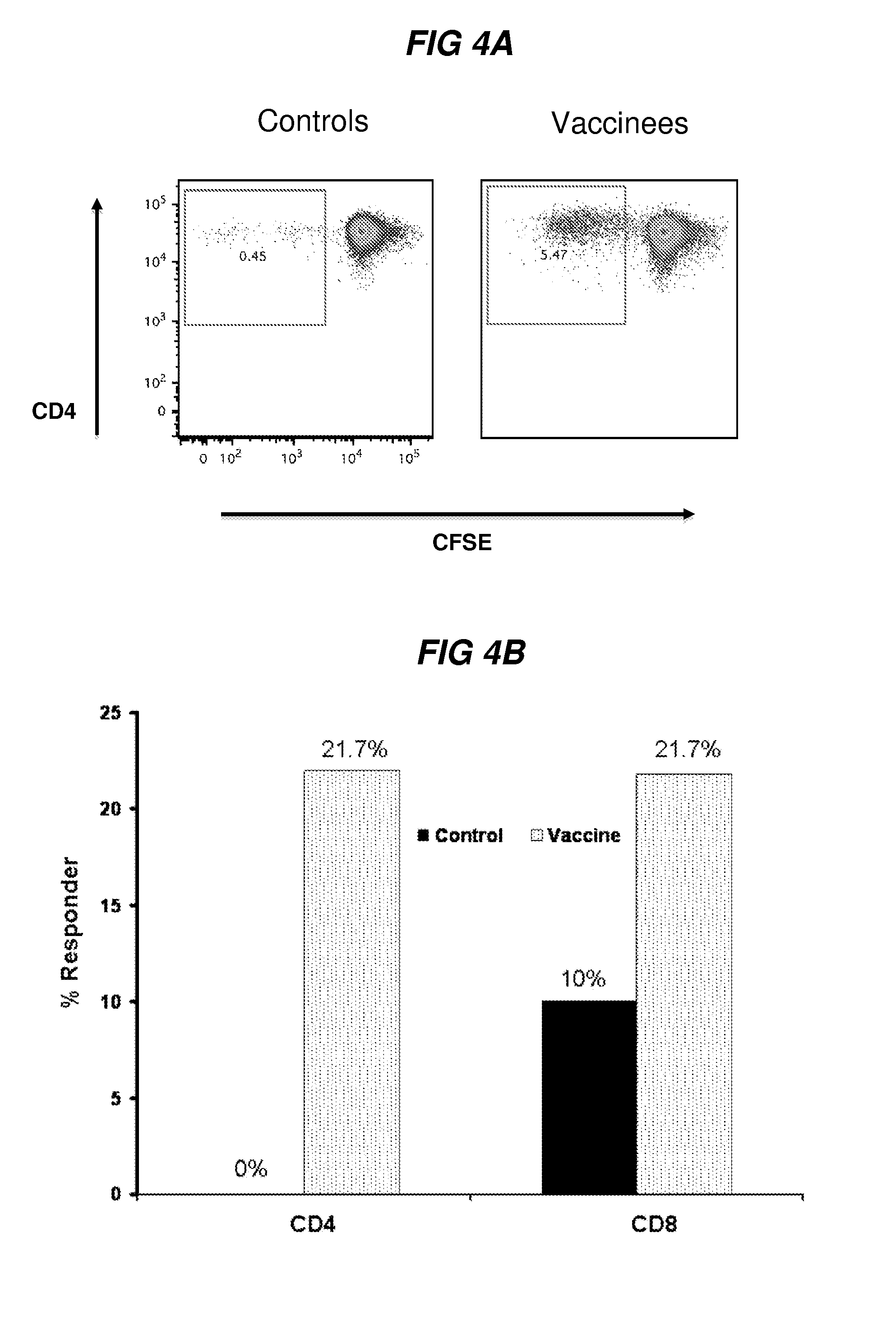Therapeutic immunization in HIV infected subjects to augment antiretroviral treatment
a technology for immunization and hiv infection, applied in the field of therapeutic immunization in, can solve the problems of limited treatment options, increased cost of alternative treatment regimens, and limited options for second-line treatment, so as to effectively deliver hiv and increase immunity against hiv
- Summary
- Abstract
- Description
- Claims
- Application Information
AI Technical Summary
Benefits of technology
Problems solved by technology
Method used
Image
Examples
example 1
[0313]Demographics
[0314]Screening and enrollment into Phase 1A occurred from April 2008 to September 2008. Of the 153 volunteers screened at the JCRC, 30 HIV positive volunteers were identified and enrolled (25 women and 5 men). The mean age of the volunteers was 41 years (range 29-55). All participants were stably suppressed on ART for 6 months or greater, had undetectable viral load (0.05, data not shown).
[0315]A total of 29 out of 30 volunteers completed the Phase 1A study. One individual relocated outside of the country and was not able to complete their last visit at 12 months. Twenty-seven of the thirty volunteers from Phase 1A agreed to participate in Phase IB. Of these, twenty-four fully evaluable volunteers received a booster immunization and underwent closely monitored treatment interruption twenty-one days after receiving the LFn-p24C booster injection.
[0316]Local and systemic reactogenicity for both Phase 1A and 1B is shown in FIG. 1. The most commonly repo...
example 2
[0318]T Cell Profile of Vaccine Responders
[0319]HIV preferentially infects activated CD4+ T helper cells and this has previously raised concerns over whether an AIDS vaccine can generate more targets for the virus32-34, particularly in HIV infected individuals. The inventors next examined both CD8 and CD4 T-cell immune activation after three immunizations (visit 11A) and compared the levels to unvaccinated control samples. The inventors determined no significant differences in CD4 and CD8 immune activation between vaccine recipients and control samples (FIG. 3A, p>0.5).
[0320]Functional impairment of T cells during chronic HIV infection is associated with higher expression of programmed death 1 (PD-1), and upregulation of PD-1 is also predictor of disease progression35-37. Surprisingly, therapeutic immunization was associated with lower PD-1 expression in both CD4+and CD8+ T cells at visit 11A compared to unvaccinated control samples (FIG. 3B, p=0.016 and 0.041, respectively). No sig...
example 3
Vaccine-Specific T Cell Proliferation
[0321]HIV-1-specific T cell responses as measured by interferon secretion do not differ in individuals with progressive and long-term nonprogressive HIV-1 infection and are not directly associated with the level of viral replication38-40.
[0322]In contrast, HIV-1-specific proliferative responses are lost in individuals with progressive disease41. The innventors measured T cell proliferation in vaccine recipients after 3 immunizations (example of plot is shown in FIG. 4A). Flow-based proliferation, as measured by CFSE dilution, was measured in vaccine recipients at twelve months (visit 11A) and compared to unvaccinated controls. Results were valid in 23 vaccine and 20 control samples. Vaccine-specific CD4+ proliferation to Gag C was significantly higher in individuals who received the vaccine compared to the unvaccinated control group and 5 / 23 [21.7%] and 0 / 20[0%], respectively, (FIG. 4B, p<0.05). No CD4-mediated proliferation was detected in the c...
PUM
| Property | Measurement | Unit |
|---|---|---|
| time | aaaaa | aaaaa |
| time | aaaaa | aaaaa |
| time | aaaaa | aaaaa |
Abstract
Description
Claims
Application Information
 Login to View More
Login to View More - R&D
- Intellectual Property
- Life Sciences
- Materials
- Tech Scout
- Unparalleled Data Quality
- Higher Quality Content
- 60% Fewer Hallucinations
Browse by: Latest US Patents, China's latest patents, Technical Efficacy Thesaurus, Application Domain, Technology Topic, Popular Technical Reports.
© 2025 PatSnap. All rights reserved.Legal|Privacy policy|Modern Slavery Act Transparency Statement|Sitemap|About US| Contact US: help@patsnap.com



